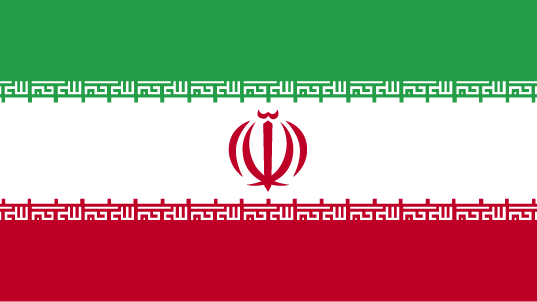Imagine, for a moment, a world in which the United States is a regional power, not a superpower. A world in which the globe’s mightiest nation, China, invades Mexico and Canada, deposing the leaders of both countries. A world in which China has also ringed the Americas, from Canada to Central America, with military bases.
A world in which Chinese officials openly brag about conducting covert operations against and within the United States. A world in which the Chinese launch a sophisticated and crippling cyber attack on America’s nuclear facilities. A world in which the Chinese send spy drones soaring over the United States and position aircraft carrier battle groups off its shores. What would Americans think? How would Washington react? Perhaps something like Iran’s theocratic leadership today. After all, Iran has seen the United States invade its neighbors Iraq and Afghanistan, announce covert operations against it, surround it with military bases, fly drones over it, carry out naval operationsoff its coast, conduct a gigantic build-up of military forces all around it, and launch a cyberwar against it.
Imagine again, in this alternate universe, that China forged military alliances throughout the Americas, pulling Mexico and Canada, as well as Caribbean and Central American nations into its orbit. Imagine that it started selling advanced military technology to those countries. How might the U.S. government and its citizens respond?
It’s a question worth pondering given Washington’s recent actions. Last month, for instance, the U.S. quietly announced plans to further flood the Middle East with advanced weaponry. According to November notices sent by the Pentagon to Congress, the Department of Defense intends to oversee a $300 million deal with Saudi Arabia for spare parts for Abrams Tanks, Bradley Fighting Vehicles, and Humvees, and another for $6.7 billion in new advanced aircraft. Add to this a proposed sale of $9.9 billion in Patriot missiles to Qatar, a $96 million deal with Oman for hundreds of Javelin guided missiles, and more than $1.1 billion in Terminal High Altitude Area Defense (THAAD) missiles for the United Arab Emirates. And this was on top of deals struck earlier in the year that include a $63 million sale of Huey II helicopters to Lebanon, $4.2 billion in Patriot missiles for Kuwait, a $3 billion agreement to arm Qatar with advanced Apache attack helicopters, more than $1 billion in upgrades for Abrams tanks belonging to Morocco’s military, and the sale of $428 million worth of radar equipment and tactical vehicles to Iraq.
In Election 2012’s theatre-of-the-absurd “foreign policy” debate, Iran came up no less than 47 times. Despite all the fear, loathing, threats, and lies in that billionaire’s circus of a campaign season, Americans were nonetheless offered virtually nothing substantial about Iran, although its (non-existent) WMDs were relentlessly hawked as the top U.S. national security issue. (The world was, however, astonished to learn from candidate Romney that Syria, not the Persian Gulf, was that country’s “route to the sea.”)
Now, with the campaign Sturm und Drang behind us but the threats still around, the question is: Can Obama 2.0 bridge the gap between current U.S. policy (we don't want war, but there will be war if you try to build a bomb) and Persian optics (we don't want a bomb -- the Supreme Leader said so -- and we want a deal, but only if you grant us some measure of respect)? Don’t forget that a soon-to-be-reelected President Obama signaled in October the tiniest of possible openings toward reconciliation while talking about the “pressure” he was applying to that country, when he spoke of “our policy of... potentially having bilateral discussions with the Iranians to end their nuclear program.” More

